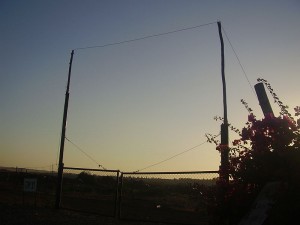Eruv and Sectarianism in Ancient Judaism: Conclusion

Eruv, Avnei Eitan, Golan Heights. Courtesy of http://commons.wikimedia.org/wiki/File:TzuratHapetach.JPG
We have attempted to show here that with the help of the Dead Sea Scrolls and rabbinic literature we can understand clearly that the priestly, sectarian trend of Jewish law followed by the Dead Sea Scrolls sectarians and a variety of others prohibited carrying on the Sabbath, but did not employ the device of eruv to mitigate the difficulty of this prohibition. Because such an institution is dependent on the rabbinic oral law concept, it could therefore not have existed among the various sectarian groups. We do not know if it did in fact exist among the early Pharisees. We continue to see eruv as an innovation of the Pharisaic-rabbinic tradition, dependent as it is on the recognition that besides the public and private domains there are other types of domains as well. Eruv physically creates an intermediate domain, a karmelit, and then converts it through the collection of common bread, into a private domain. Even if the extension of the home that constitutes the basis of the rabbinic eruv did derive from some sectarian usage, the rabbis should be given the credit for establishing the institution of eruv to make permissible carrying to and from what otherwise would have been separate domains, and in what would have been the public domain, on the Sabbath.

Leave a Reply